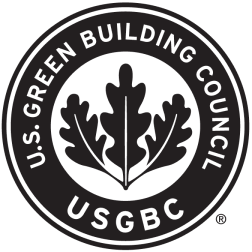Understanding LEED Certification
WHAT IS LEED CERTIFICATION?
Understanding LEED certification is a crucial part of any material specifiers day. LEED (Leadership in Energy and Environmental Design) is the most widely adopted green building rating system worldwide, providing a trusted framework for creating sustainable, efficient, and healthier buildings.
WHAT LEED CERTIFIED PRODUCTS DOES ROBIN REIGI REPRESENT?
Robin Reigi is committed to a sustainable future and they work closely with with architects and designers to align sustainability goals with tailored architectural material solutions. Most of our materials are LEED certified, including the entire Decospan line (Shinnoki, Querkus, Astrata, and AstraCoustics), the entire Slalom collection, all of our Plyboo lines, Texaa, and all of the wood tiles and flooring from Jamie Beckwith.

WHY LEED MATTERS IN MODERN DESIGN
LEED-certified spaces support environmental, social, and governance (ESG) goals while reducing operational costs and offering long-term value. Earning LEED certification signals a global commitment to sustainability and responsible building practices.
BENEFITS BEYOND SUSTAINABILITY
LEED certification goes far beyond environmental impact—it also benefits businesses, people, and communities. LEED-certified buildings have been shown to hold higher resale value, lower operational costs, and improved long-term asset performance compared to non-certified spaces.
Beyond economics, LEED promotes healthier indoor environments by prioritizing air quality, non-toxic materials, and strategies like smoke-free policies and sustainable food production. This focus on occupant well-being makes LEED buildings more desirable for tenants and beneficial for community health.
WHO OVERSEES LEED?
LEED is backed by USGBC—the developers of LEED—and an entire industry of committed organizations and individuals who are paving the way for market transformation. USGBC invests more than $30 million annually to maintain, operate and improve LEED and its customer delivery.
You can learn more in the Guide to LEED Certification.
Platinum
(80+ points earned)
Gold
(60-79 points earned)
Silver
(50-59 points earned)
Certified
(40-49 points earned)

